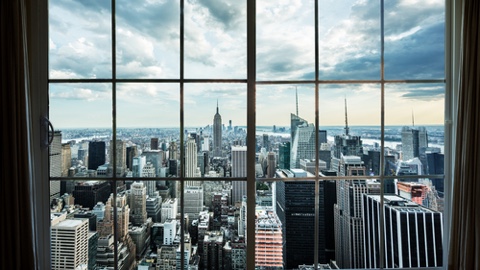
Smart windows can play an important role in cost-savings and efficiency for municipal buildings. According to the U.S. Green Building Council (USGBC), the principle loss of energy in buildings is through windows. Smart windows eliminate glare, minimize the heat load, maximize daylight, and allow for personalized remote control. And, importantly, it is estimated that they can reduce energy expenditures by up to 20 percent.
Two of the major players in the smart window industry are View and Sage Glass. Both companies use electrochromic technology, where the glass is coated with nano layers of metal oxides. When sunlight hits the coated glass, the ions move between the different layers, changing the structure and tint of the glass. Sensors provide feedback about external conditions, allowing for automatic responses in lighting levels. The building manager can create schedules, track energy efficiency, and manage entire buildings with a smartphone or tablet.
“The algorithm is going to be dependent on the time of year, the latitude and longitude of the building and what the weather is doing,” explains Dr Brandon Tinianov, the vice president of business development at View. “But I also know how far away from the window your workstation will be and how the sunlight will hit your screen at different times of day and year. And I can have an office that’s lighter and, right next to it, one that’s darker.”
Smart windows do cost approximately 50 percent more than traditional windows, but these additional costs need to be assessed with the potential in savings elsewhere. They eliminate the need for blinds and curtains, for example, and the greater efficiencies in heat load lead to savings on heating, cooling, and air-flow.


